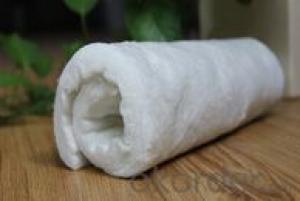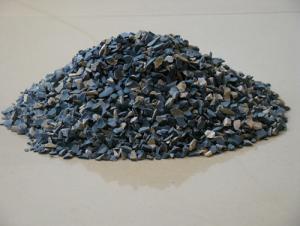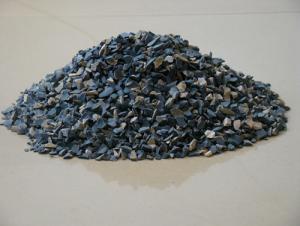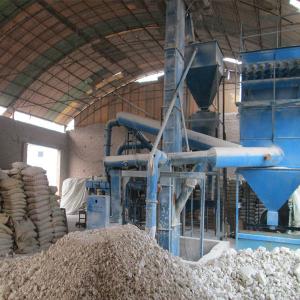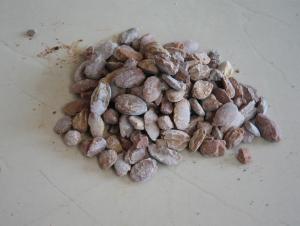Ceramic Fiber For Boiler Insulation
- Loading Port:
- China Main Port
- Payment Terms:
- TT OR LC
- Min Order Qty:
- -
- Supply Capability:
- -
OKorder Service Pledge
OKorder Financial Service
You Might Also Like
Specifications
ceramic fiber
High density thermal insulation
27-year-old manufacturer
ISO9001,ISO14001,TUV
Ceramic fiber for boiler insulation
Introduction
which can be widely used for industry kilns, and has good saving power effect. According to content, we develope four diferent kinds of pruducts, they are 1000 °C common aluminum silicate, 1200 °C high purity, 1200 °C high alumia and 1300 °C Zirconia bearing alumina silicate, and it also can be made according to your requirements.
Advantages of ceramic fiber
1. Profession manufacture
2. Low price and high quality
3. prompt reply-within 24hours
4. prompt delivery-within 15 days
Application of ceramic fiber
1. Metallurgy Industry: heating furnaces,heat treatment furnaces and ladle insulated cover
2. Mechanism industry: thermal insulation material for electric power boilers, gas turbine engine and nuclear power plant
3. Petrochemical industry: the lining of high-temperature reaction equipment and heating equipment in chemical fields,like converting furnaces, constant/reduced pressure furnaces, cracking furnaces, flue lining.
4. Electroceramics: roller kilns,tunnel kilns ,shuttle kilns and other kinds of furnaces
Physical and Chemical Index of ceramic fiber
Type List Item |
Common |
Standard |
High-purity | High- aluminium |
Zirconic | |
Classification Temperature(°C) | 1100 | 1260 | 1260 | 1360 | 1430 | |
Working Temperature(°C) | 1000 | 1050 | 1100 | 1200 | 1350 | |
Color | White | White | White | White | White | |
Volume Density(kg/m³) | 96,128 | 96,128 | 96,128 | 128,160 | 128,160 | |
Permanent Linear Contrative(%) (insulation 24 hours volume density 128kg/m³) | -4 (1000°C) | -3 (1000°C) | -3 (1100°C) | -3 (1250°C) | -3 (1350°C) | |
Each Heat Surface Temperature Of The Thermal Conductivity(W/M.K) (density 128kg/m³) | 0.09(400°C) 0.176(800°C) | 0.09(400°C) 0.176(800°C) | 0.09(400°C) 0.176(800°C) 0.22(1000°C) | 0.132(600°C) 0.22(1000°C) | 0.76(600°C) 0.22(1000°C) | |
Tensile Strength (Mpa) (density 128kg/m³) | 0.08—0.12 | 0.08—0.12 | 0.08—0.12 | 0.08—0.12 | 0.08—0.12 | |
Chemical Composition(%) | AI2O3 | 44 | 46 | 47-49 | 52-55 | 39-40 |
AI2O3+SIO2 | 96 | 97 | 99 | 99 | - | |
AI2O3+SIO2+ZrO2 | - | - | - | - | 99 | |
ZrO2 | - | - | - | - | 15-17 | |
Fe2O3 | <1.2 | <1.0 | 0.2 | 0.2 | 0.2 | |
Na2O+K2O | <0.5 | < 0.5 | 0.2 | 0.2 | 0.2 | |
Product Size(mm) | 7200*610*10-50; | |||||
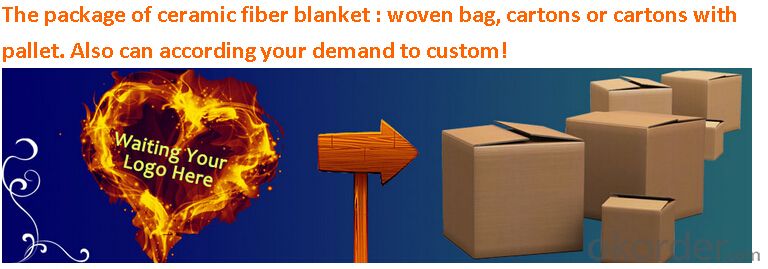
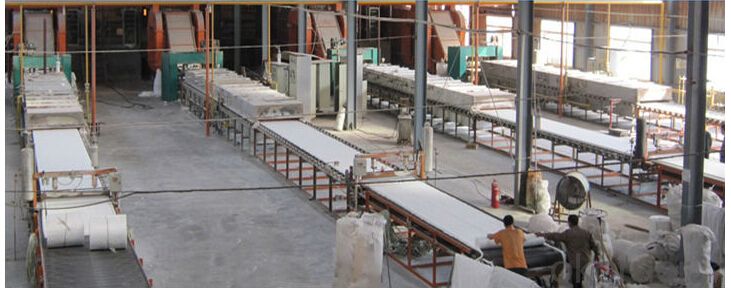
- Q:What is the fire endurance of ceramsite concrete blocks?
- The fire endurance of 240mm thick ceramsite concrete blocks is 2.9 hours. It is made by adding pottery into fine aggregate, using cement as binding material, by mechanical mixing, molding machinery and natural protection. Ceramsite building blocks are used as wall material, which can reduce workers' labour intensity. It saves work and material. There is no empty drum during rendering. It is not easy to produce fissure. It has sound insulation, good thermal insulation performance, and is convenient to decorate. Nails, expaned setscrew and no wood anvil can be directly hit into wall. Moreover, It has high firmness.
- Q:How to measure the influence of high-temperature performance of the products refractory in the formation of the liquid phase.
- Seeing whether it can affect the usage of the refractory material, and seeing to reduce the impurity, what's the condition of temperature of the liquid phase. Practically, whether it has any difference if you can improve, load under load and creep and reduce the impurity content. In the refractories, producing liquid are the influence of impurities, high temperature resistant strength, compared the use of the refractory material temperature: testing compressive strength after burn. If there are any impact: knowing the main crystal phase of matrix composition and content, improving the content of the main crystalline phase can improve the high temperature performance of refractory materials.
- Q:What is the material composition of the new fire-resistant coating?
- The basic composition of thick coating steel structure fire is: Binder (Portland cement, magnesium oxychloride or inorganic high-temperature bonding agent), aggregate (expanded vermiculite, perlite, aluminum silicate fiber, mineral wool, rock wool, etc.), chemical additives (modifiers , hardening agent, waterproofing agent) and water. Fireproof coating binders Portland cement, magnesium oxychloride cement and an inorganic binder of the fire-resistant coating for steel structure base material. The conventional inorganic binder include alkali metal silicates and phosphates substances.
- Q:Which refractory material is better in China? Industrial furnace, mainly in non-ferrous industries, glass kiln, cement kiln business.
- Such solid nano microporous insulation material with nano inorganic refractory powder special, with a huge surface area, nano particles contact between the minimum point contact point contact thermal resistance is very large, the heat conduction effect of the material becomes very small, resulting in heat conduction coefficient of solid such nano porous insulation materials very small; nano pores formed of nanoparticles, the average size of 20 nm, and the average free path of molecular thermal motion at room temperature under static air is 60 nm, thus locking the air molecules in powder within nano pores, making the micro convection heat transfer effect between the stationary air molecules disappeared. The room temperature thermal conductivity of solid such nano microporous insulation material is lower than the static air; at high temperature, the main effect of heat transfer heat radiation, Good energy-saving insulation materials with nano microporous infrared additive special, stop at a high temperature and reflected infrared radiation, reduce the heat radiation effect to the lowest point, the radiation heat transfer coefficient of materials under high temperature is reduced to the lowest value.
- Q:Who knows about the criteria of fireproof and thermal insulation materials?
- 1. thermal insulation materials with A-level combustion performance: EPS sea capacity module, rock wool, glass wool, foam glass, foamed ceramics, foam cement, hole-closed perlite, etc. 2. thermal insulation materials with B1-level combustion performance: specially-treated extruded polystyrene boards(XPS)/ specially-treated Polyurethane(PU), phenolic aldehyde, gelatine powder polyphenyl granule,etc. 3. thermal insulation materials with B2-level combustion performance: molding polystyrene board(EPS), extruded polystyrene board(XPS), polyurethane(PU), polyethylene(PE), etc. Such A-level insulation materials are only fireproof, the thermal insulation properties are worse than that of organic XPS \\EPS materials. Currently I think that the best insulation material should be EPS sea capacity module, it not only achieves the requirement of insulation but also fulfills the goal of fireproofing, and the comprehensive unit price of it is not expensive. The thermal insulation materials in the domestic market have their own disadvantages, you'd better take the building demands into consideration, and use the materials that are within the acceptable range. I hope my answers help you.
- Q:How should refractory cement be used?
- Types of refractory mortar Refractory mortar can be divided into the following types: casting of fire mortar: also known air setting fire mortar. It is used as a protective refractory layer in the kiln head burner, as a refractory material in some parts of preheater, and it is generally constructed by grouting. b: Insulation fire mortar: It is used to repair the deformed plane of the kiln shell, or for thermal insulation of the roof in the cooler. Refractory mortar: It is also known as thermosetting fire mortar, mainly used in brick masonary. When using, we must add the glassy water to stir. (silicic acid sodium, water, NaSiO3, H2O). General DiDOTECT 135 (having a heat resistance of above 1350 degrees Celsius) SK34 is used in the kiln tail. DiDOTECT 150 (having a heat resistance of above 1500 degrees Celsius). SK35 Couprit 160H is used under high temperature, and it is mainly used in the kiln head coal injection nozzle.
- Q:How is grade of fire endurance divided?
- Fire resistance level is mainly decided according to the importance and function of the building. For example, very important buildings are set as the first level, and the less important is the second level, and so on.
- Q:I would like to ask a friend that how much is the fire endurance of level A fireproofing glass?
- fireproofing glass is mainly control the spread of fire or smoke insulation, and is a measurable fireproofing material, the fireproofing effect is evaluated by the fire resistance. It is through a special process and treatment, and it is a special glass which can maintain its integrity and thermal insulation in the specified fire resistance test. Original glass of fireproofing glass can be used float flat glass, and composite fireproofing glass also can use monolithic fireproofing glass.
- Q:what's the fireproof levels of fireproof and thermal inuslation matertial?
- 1, organic materials: B level material is flammable, B1 level material is flame retardant. 2, inorganic materials: Grade A flame-resistant materials are divided into three classes and two kinds of materials.
- Q:What is the the best ratio of mortar in refractory cement?
- The ratio of refractory cement are: M10 the ratio of cement and mortar: cement: Sand= 346kg: 1631kg M7.5 ratio of cement and mortar: cement: Sand =274kg: 1631kg M5 The mix proportion of cement and mortar: cement: Sand = 209kg: 1631kg M10 mix proportion of composite mortar: cement: Sand: Lime =306kg: 1600kg: 29kg M7.5 mix proportion of composite mortar: cement: Sand: Lime =216kg: 1600kg: 64kg M5 The mix proportion of composite mortar: cement: Sand: Lime =205kg: 1600kg: 100kg
1. Manufacturer Overview |
|
|---|---|
| Location | |
| Year Established | |
| Annual Output Value | |
| Main Markets | |
| Company Certifications | |
2. Manufacturer Certificates |
|
|---|---|
| a) Certification Name | |
| Range | |
| Reference | |
| Validity Period | |
3. Manufacturer Capability |
|
|---|---|
| a)Trade Capacity | |
| Nearest Port | |
| Export Percentage | |
| No.of Employees in Trade Department | |
| Language Spoken: | |
| b)Factory Information | |
| Factory Size: | |
| No. of Production Lines | |
| Contract Manufacturing | |
| Product Price Range | |
Send your message to us
Ceramic Fiber For Boiler Insulation
- Loading Port:
- China Main Port
- Payment Terms:
- TT OR LC
- Min Order Qty:
- -
- Supply Capability:
- -
OKorder Service Pledge
OKorder Financial Service
Similar products
New products
Hot products
Related keywords
